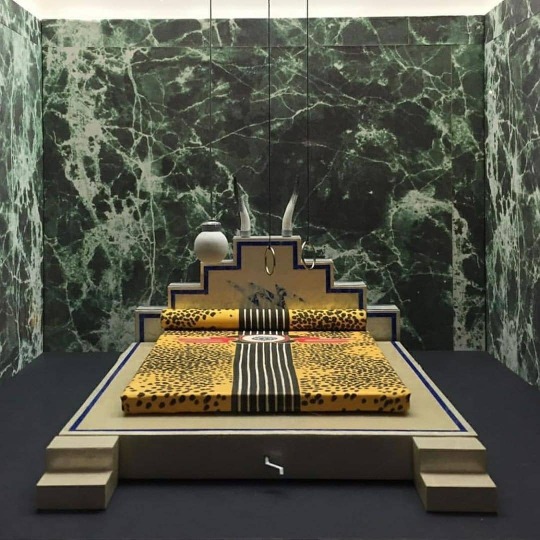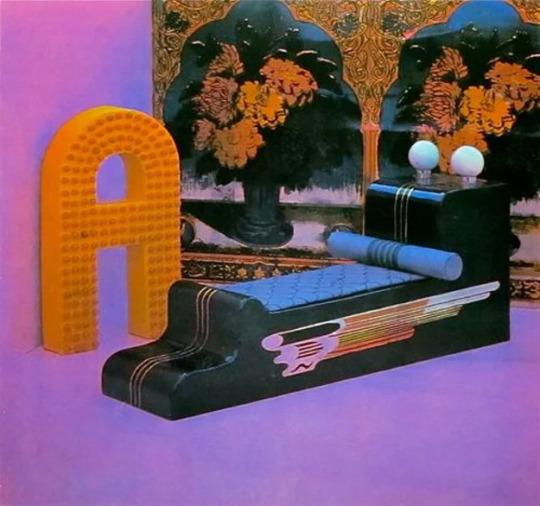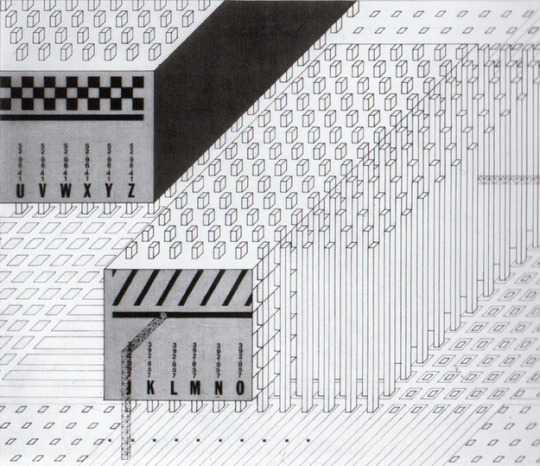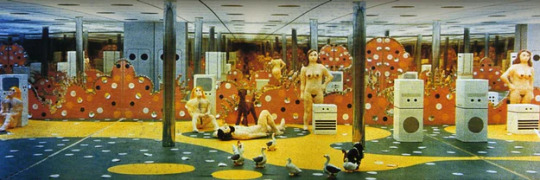#Gilberto Corretti
Text

Archizoom Associati, No-stop city, 1970 [«Abitare»]
#architecture#urbanism#design#geometry#pattern#magazine#no stop city#archizoom associati#andrea branzi#gilberto corretti#paolo deganello#massimo morozzi#dario bartolini#lucia bartolini#abitare#1970s
38 notes
·
View notes
Text
Regione Liguria: oltre 2 milioni di euro per potenziare sistema di monitoraggio versanti, situazione idrogeologica e incendi boschivi

Regione Liguria: oltre 2 milioni di euro per potenziare sistema di monitoraggio versanti, situazione idrogeologica e incendi boschivi.
La Liguria potenzierà il proprio sistema di monitoraggio dei versanti, della situazione idrogeologica e degli incendi boschivi con un investimento di oltre 2 milioni di euro grazie all' Accordo di cooperazione istituzionale con il Ministero dell'Ambiente e della Sicurezza Energetica (MASE), in attuazione di una delle misure previste dal PNRR.
"La sicurezza in termini di protezione civile - spiega l'assessore competente Giacomo Giampedrone – si compone di fattori diversi, ma la parte più importante, assieme alla diffusione di una approfondita cultura di protezione civile e di quali siano i comportamenti corretti da adottare, è proprio quella della prevenzione e del monitoraggio. Per questo implementare le reti di monitoraggio su tematiche molto rilevanti per il territorio ligure come frane, rischio legato a eventi meteo e antincendio boschivo avrà ricadute particolarmente positive per le amministrazioni locali, i cittadini e le imprese liguri. Voglio ringraziare il ministro Gilberto Pichetto Fratin per l'attenzione a questo progetto, che rientra a pieno nel percorso di potenziamento della protezione civile e della riduzione del rischio".
Il MASE provvederà all'acquisto e installazione della strumentazione che verrà ceduta a titolo gratuito a Regione Liguria e gestita da Arpal.
I dati di monitoraggio verranno trasferiti al MASE e verranno inseriti nel sistema SIM (Sistema avanzato e Integrato di Monitoraggio e previsione) previsto dal PNRR Misura M2C4 – Investimento 1.1....
#notizie #news #breakingnews #cronaca #politica #eventi #sport #moda
Read the full article
0 notes
Text
Burbujas | Pedro Hernández
“Desde principios de la década de 1900, el capitalismo financiero comenzó a reemplazar el régimen disciplinario y la rígida compartimentación de la producción industrial en masa con regímenes más aleatorios de especulación y acumulación flexible, produciendo programas que no requerían ningún espacio en particular, sino solo una cantidad rentable metros cuadrados para responder mejor a las variaciones del mercado”.
Francesco Marullo1
Para Francesco Marullo, la traducción arquitectónica de este planteamiento fue el Typical Plan (TP). Analizado por Rem Koolhaas al observar la arquitectura de Nueva York, en especial de su Downtown, y enunciado en el libro S,M,L,XL, se describe como un orden esquemático definido por una retícula que opera y existe de forma independiente del uso final al que el espacio vaya destinado; su flexibilidad permite que, en él, se performen todas las actividades. Su expresión es mínima, “pura objetividad”,2 una suerte de “minimalismo para las masas”:3
[...]
#Andrea Branzi#archizoom#BIG#Charles Fox#coworking#creative commons#creatividad#Cristine Lagorio-Chafkin#Dario Bartolini#economía creativa#Eleanor Gibson#Éric Sadin#Fernando Quesada#flexibilidad#Francesco Marullo#Frank Gehry#Gilberto Corretti#Harriet Thorpe#Heatherwick Studio#Hito Steyerl#industrialización#intercambio#internet#Jonathan C. Molloy#Jonathan Crary#Joseph Paxton#Kazys Varnelis#Key MacFarlane#Lina Malfona#Lucia Bartolini
0 notes
Photo

{1967} presagio di rose {omen of roses} by gilberto corretti for associati d'archizoom at @fraccentre. 1st 📷: @fridaescobedo . . . follow @oddstoanend for more art, architecture, & interiors. . . . . . . . . . . . #interiordesign #gilbertocorretti #lettodisogno #presagiodirose #interiors #bed #bedroom #80sdecor #fraccentrevaldeloire #retrodesign #retroaesthetic #homedecor #homedesign #homestyling #interiordecorating #interiorinspo #decor #instadecor #theworldofinteriors #vintageinteriors #interiorinspiration #vintagestyle #luxuryliving #archdigest #interiorstyle #interiorandhome #archdaily #homestyle #interiorsofinstagram #oddstoanend (at Orléans, France) https://www.instagram.com/p/CJ2dEccHzUY/?igshid=92rnqjihr8f0
#interiordesign#gilbertocorretti#lettodisogno#presagiodirose#interiors#bed#bedroom#80sdecor#fraccentrevaldeloire#retrodesign#retroaesthetic#homedecor#homedesign#homestyling#interiordecorating#interiorinspo#decor#instadecor#theworldofinteriors#vintageinteriors#interiorinspiration#vintagestyle#luxuryliving#archdigest#interiorstyle#interiorandhome#archdaily#homestyle#interiorsofinstagram#oddstoanend
5 notes
·
View notes
Text
Archizoom, Superstudio, Archigram
Known for their innovative graphic design and spectacular photomontages which often represented municipal utopias and thought-experiments: cities of demiurges which were neither desirable nor constructable, nor even habitable – urban nightmares with talented design and journalistic charms, continuous towns – infinite, suspended, even on the move, towns above towns, or even below.
1. ARCHIZOOM - Florence, 1960s, frustration at stagnation of architectural profession
Andrea Branzi, Massimo Morozzi, Gilberto Corretti, and Paolo Deganello, and later the Bartolinis.
Initial products included Pop Art-inspired furnishings, such as the Safari Chair, which was upholstered with exotic animal skins, or the Dream Bed, which, with its kitschy colour and shape, sought to disrupt any attempt at good taste in middle class homes.

Another satirical artifact is Archizoom’s “Mies” chair, named after the iconic modernist architect and designer; using Mies’s own trademark chrome tubes, along with Le Corbusier’s cowhide pillows, the chair sought to take the consumerist impulses of modernism to an absurd extreme.
“FURNITURE JOKES”
Combined the aesthetics of Pop Art with the principles of mass consumption, with the aim of overturning mainstream society
“Superarchitettura is the architecture of superproduction, superconsumption, superinduction to consume, the supermarket, the superman, super gas.”
“No-stop City is an unbuilt project, one that is, however, well documented in drawings, photographs and a 2006 monograph. The drawings show an infinitely extending grid, subdivided by partial lines symbolizing walls, and interrupted only by natural features such as mountains. The photographs portray an endless and rather featureless space in which humans live as campers. Spaces are filled with rocks and branches, small pieces of nature brought inside the artificial world. Tents, appliances, and motorcycles show that basic needs are met, while other drawings show endless grids of bedrooms, perhaps containing the Dream Bed or Safari Chair.”


Credited with starting the “Anti-Design” movement, the group might also have had an influence on Rem Koolhaas’s essay “Junkspace,” now studied even in English departments, which envisions a world of endless airports and shopping malls, featureless indoor spaces animated only by shopping and air conditioning.


Endless double-mirror infinity space.
How does this transfer to real architecture? Does it at all or is it purely sociological commentary?
2 notes
·
View notes
Text
ARCHIZOOM ASSOCIATI
Around 1966, settle in one of my favorite cities, Florence Italy, a group of students named Andrea Branzi, Massimo Morozzi, Gilberto Corretti and Paolo Deganelo -in 1968 two more members, the Bartolines joined the group.- They had just finished architectural school but at the time, there was a lack of work and a general stagnation of the architecture profession. Also these years in Italy were marked by an economic downturn, housing shortages, and governmental fumbling.
This architects came together to form groups of design vigilantes known as the “Italian radicals” that their work critiqued modernism and promote consumerist style-driven societies.
Sotsass introduced Archizoom to Poltronova. These produced a series of projects in design, architecture and urban visions, “they inspired many young architects to reassess the intellectual input of their personal creativity while denying the technological input in open criticism of consumerist society.” (Raimondi, G., 1990)
Archizoom came to prominence through an anti-consumerist exhibitions named “superarchitecture” which consists in a pop style in architectural and design development. They broke the conception of traditional good design by applying irony in the creation of kitschy gazebos and environments that undertook the critical destruction of functionalist heritage and the spatial concept of modern movement.
They created the “Superonda” sofa launch in 1966 that consists on a sinusoidal line cut from a polyurethane foam block and covered in shiny leatherette. They come in white, red or black colours. This was one of the first sofa without an ordinary frame. Super onda was designed to challenge the middle class restraint.
“Like all the objects designed by Archizoom, it aims to inspire creativity and imagination (...) it effectively shown a manifesto of italian radical design by its modular character and lightness that allow its usage to be changed at will; it can be a bed, a sofa or a chaise longue.” (Centrostudiopoltranova, n.d)
Archizoom in 1967 created the “Safari” sofa, consisting of a fiberglass structure with a seat and back of polyurethane, upholstered in fake leopard skin fabric. Its modularity allows it to be joined as a sofa or an armchair.
This sofa refers to the kitsch design and Pop Art. Its modular format provides a new domestic landscape that stimulates creativity and individual imagination.
The safari sofa and the superonda were furniture that demonstrated an uncontrolled eclecticism. “These objects are based on their essence as image and status objects rather than as objects, and were born in controversy with the fashion of super-padded furniture, symbols of well-being, opulence, distinction and good taste.” (White, R & Donohue, D., 2013)
In 1967 they came up with the “Dream bed” “that give life to hybrid and ironic environments with strong citations from kitsch and Islamic or oriental patterns, with the aim to spoil the optimistic vision of bourgeois progress.” (White, R & Donohue, D., 2013)
Archizoom culminates with the anti-design movement in 1969 "No-Stop-City," one of the most mysterious and radical visions of the future cities, an ironic urban plan with a highly artificial environment consisting in no borders, artificially illumination and air-conditioned that takes modernist ideology to an extreme. In order to make it popular and to get people feel attracted, Archizoom created multifunctional furniture and clothing for the inhabitants.
By the end of their activity, around 1974 Archizoom achieved an all-embracing creation, reaching from object to clothing, from furniture design to large scale urban proposals; a heritage transpiring the passionate ideals of a generation believing in a humanity liberated of the constraints of architecture, fighting for alternative cultural concepts, hoping for a nonconformist lifestyle and total freedom.
REFERENCES
Centrostudiopoltranova, (n.d) Superonda, from the web: http://www.centrostudipoltronova.it/portfolio_post/superonda-3/#
Pamono, (2017). Superonda Sofa, from the web: https://www.pamono.com/superonda-sofa-by-archizoom
White, R & Donohue, D., (2013) Networks of Design, Florida, US: Boca Raton, digital in https://books.google.it/books?id=3B5bbv0r-EkC&pg=PA101&lpg=PA101&dq=dream+bed+archizoom&source=bl&ots=BHFUrRGMZ2&sig=IMR6phDKCzgmqKsA1eoDWFa4NUk&hl=es&sa=X&ved=0ahUKEwj2vvODk9zWAhWMJsAKHR1QA4AQ6AEIdDAO#v=onepage&q=dream%20bed%20archizoom&f=false
Raimondi, G. (1990). Italian Living Design: Three decades of interiors, Rizzoli
1 note
·
View note
Photo



Il design non è una cosa seria
Memorie di una ragazza radicale
Cristina Morozzi
Rizzoli, Milano 2017, 194 pagine, ISBN 9788891814494
euro 19,90
email if you want to buy :[email protected]
Questo volume è un intenso racconto di vita, con l'infanzia fiorentina in una famiglia fuori dal comune, culla ideale per il suo sguardo curioso, in bilico fra arte, filosofia, moda e invariabilmente attirato dall'inedito e dal sorprendente. Un racconto personale che coincide con la sorprendente avventura del design italiano, che non è ancora finita.
Anche il sottotitolo – Memorie di una ragazza radicale – è importante: perché Cristina Morozzi è cresciuta nella Firenze della metà del secolo scorso, al fianco di Massimo Morozzi, membro di Archizoom Associati (Firenze 1966, con Andrea Branzi, Gilberto Corretti, Paolo Deganello in seguito raggiunti nel 1969 da Lucia Morozzi – sorella del marito – e il suo sposo Dario Bartolini) e poi protagonista di rilievo, in altre e diverse vesti, del mondo del progetto con cui ha condiviso una vita fatta di complicità intellettuale vera e partecipata, sorprese, avventure e si, appunto di design. Il tempo nelle sue righe non è mai preciso se non scadenzato da date indimenticabili quali quelle della nascita dei suoi quattro figli. Il resto è solo memoria, come dice lei, più o meno limpida allacciata a esperienze e circostanze particolari che l’hanno colpita per più motivi. Le piace dirci della casualità degli accadimenti. Racconta del caso che le fece incontrare Alessandro Mendini in un bar all’angolo tra via Monte di Pietà e via dell’Orso nel centro di Milano (era il 1977) dopo che il marito si traferisce in città con Andrea Branzi per lavorare al Centro Design Montefibre della Montedison, chiamati entrambi da Elio Fiorucci, amico impareggiabile per cui spende tenere parole. Quel caffè la catapulterà in una carriera fatta di scrittura.
orders to: [email protected]
twitter: @fashionbooksmi
instagram: fashionbooksmilano
instagram: designbooksmilano
tumblr: designbooksmilano
#Cristina Morozzi#design italiano#Archizoom Associati#italian design#design books#designbooksmilano#Alessandro Mendini#Massimo Morozzi
0 notes
Link
A great professor Gilberto Corretti designed a great product, its accessories and made the magic our childhood memories. #didò #children #play #design
0 notes
Quote
We want to introduce to you everything that remains out of the door: the fabricated banality, intentional vulgarity, urban furniture, voracious dogs. To scientific progress, born out of the intelligence that explains it all, and the elegance that saves it all (disabling the fuses and laying out a radiant future). We prefer a postcard-like horizon complete with rainbow. Like the fake pacifists, in the evenings we take away the beards and moustaches, meditating the most violent treason. We also want to say: we can't be found where you are looking for us, don't trust the way we greet you. And then, the air smells of dead roses, a smell which we don't like that much.
Archizoom
#archizoom#andrea branzi#post-modern#massimo morozzi#gilberto corretti#paolo deganello#no-stop city#60s#architecture#modernism#supraarchitettura
1 note
·
View note
Text

Archizoom Associati, No-stop city, 1970 [«Abitare»]
#architecture#urbanism#design#geometry#pattern#magazine#no stop city#archizoom associati#andrea branzi#gilberto corretti#paolo deganello#massimo morozzi#dario bartolini#lucia bartolini#abitare#1970s
51 notes
·
View notes
Photo

Gilberto Corretti, Sketch, Circa-1990
41 notes
·
View notes
Photo

archizoom gilberto corretti no-stop-city 1970
#archizoom#gilberto corretti#non stop city#1970#italy#utopia#utopian#Architecture#conceptual#drawing#collage
24 notes
·
View notes
Photo

Archizoom/Gilberto Corretti, No Stop City, 1970
1K notes
·
View notes
Text

Archizoom Associati, No-stop city, 1970 [«Abitare»]
#architecture#urbanism#design#geometry#pattern#magazine#no stop city#archizoom associati#andrea branzi#gilberto corretti#paolo deganello#massimo morozzi#dario bartolini#lucia bartolini#abitare#1970s
29 notes
·
View notes
Photo

Archizoom Associati, No-stop city, 1970 [«Abitare»]
#architecture#urbanism#design#geometry#pattern#magazine#no stop city#archizoom associati#andrea branzi#gilberto corretti#paolo deganello#massimo morozzi#dario bartolini#lucia bartolini#abitare#1970s
389 notes
·
View notes
Photo

Gilberto Corretti, Versilia Bench, for Armonia, Circa1990
45 notes
·
View notes